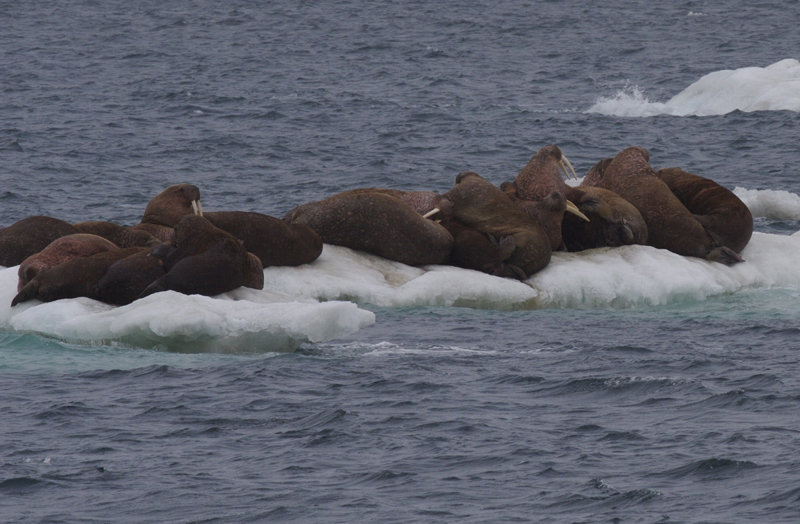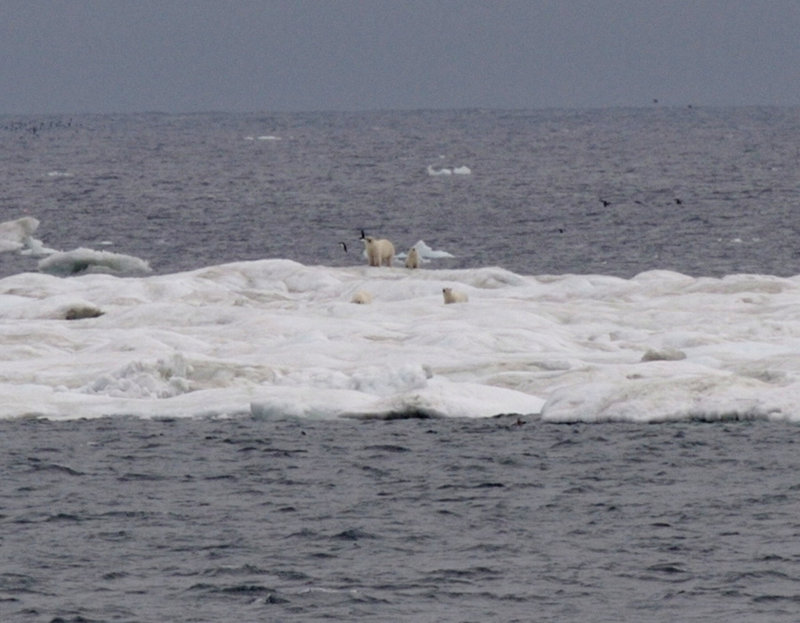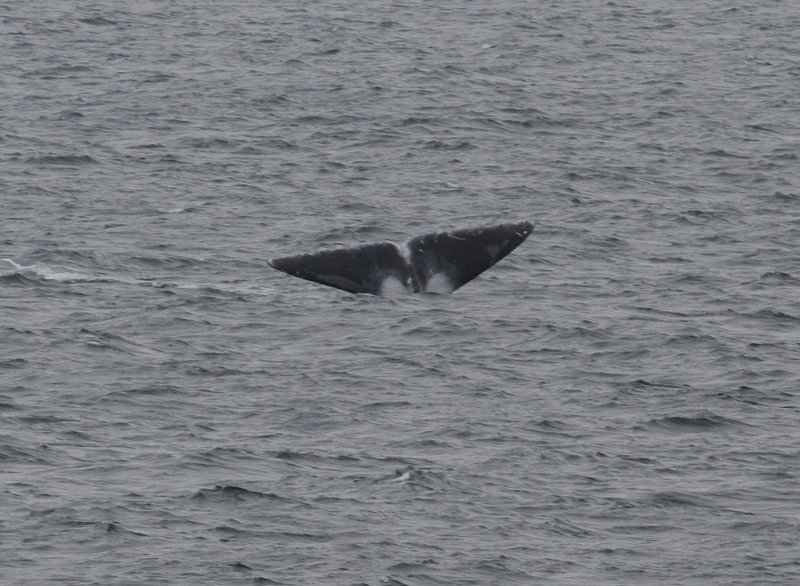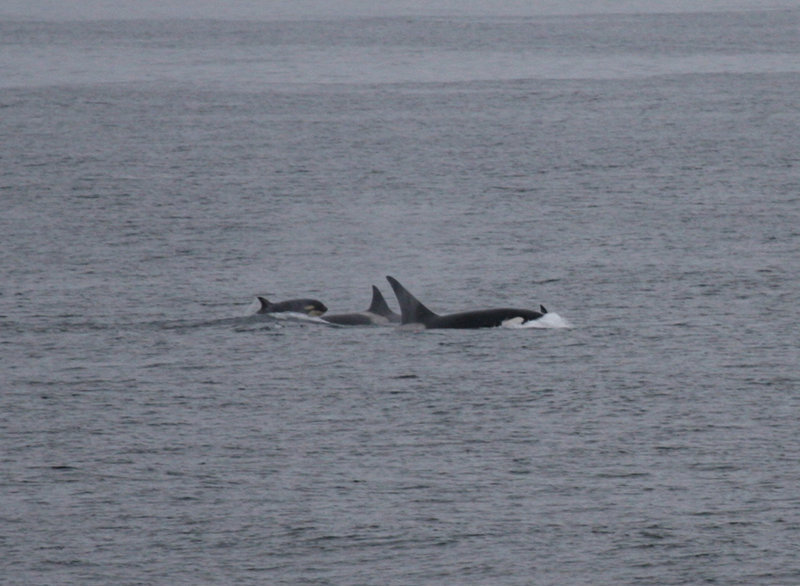
By Kate Stafford, Principal Oceanographer - Applied Physics Laboratory, University of Washington

Walrus spotted during the 2010 Russian-U.S. Arctic Census expedition. Image courtesy of Kate Stafford. Download larger version (jpg, 582 KB).
The Bering Strait is the only gateway from the Pacific to the Arctic. As such, it is an important migratory corridor for marine mammals that spend the winter in the Bering Sea but much of the rest of the year in the Arctic. These species include Arctic-adapted animals such as bowhead and beluga whales, ice seals, polar bears, and walrus.

Polar bears crossing the Arctic ice. Image courtesy of Kate Stafford. Download larger version (jpg, 385 KB).
With recent climate-change caused reductions in summer and fall sea ice extent, however, sub-Arctic species like gray, fin, humpback, and killer whales are being sighted with increasing frequency north of the Bering Strait in the Chukchi and Beaufort Seas. One way to monitor these changes is to document the presence of different species in an area using visual surveys.
On Leg 1 of this year's Russian-American Long-term Census of the Arctic (RUSALCA) cruise, hydrophones (underwater microphones) were put in place to listen for marine mammals. Because marine mammals tend to be rather vocal in communicating with each other, and different species produce distinctive sounds, such as songs, moans, clicks, sighs, and buzzes, recording underwater sounds can help researchers learn about the behaviors of these animals.

The tail of a bowhead whale breaks the surface. Image courtesy of Kate Stafford. Download larger version (jpg, 691 KB).

A pod of orca, or killer, whales observed during the 2012 RUSALCA expedition. Image courtesy of Kate Stafford. Download larger version (jpg, 586 KB).
Listening to these underwater sounds and learning about the behaviors can also help researchers find marine mammals. During the first leg of the cruise, in addition to deploying hydrophones, observers were on the bridge of the ship during all daylight hours to look for marine mammals. Despite good weather, there were few sightings in the eastern Chukchi Sea.
![]() Sounds from the Sea
Sounds from the Sea
These sounds were collected using instruments deployed as part of the RUSALCA project and recovered during the first leg of the 2012 cruise. Sounds courtesy of Kate Stafford; require QuickTime to listen.
During leg 2, while the hydrophones are busy collecting data under the sea, marine mammal observations will once again be made as the ship surveys in both U.S. and Russian waters. Observations will be made from the bridge during all daylight hours using high-powered binoculars and tracking software to document all marine mammals seen.
These observations will give us a rare glimpse of sea life across the date line. During the 2010 RUSALCA expedition, more than half of all sightings were made in Russian waters and included sightings of bowhead, humpback, gray, and killer whales, as well as polar bears and walrus.